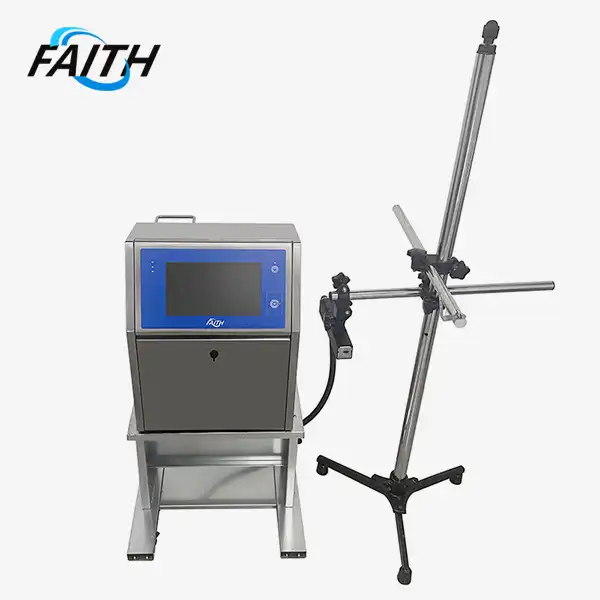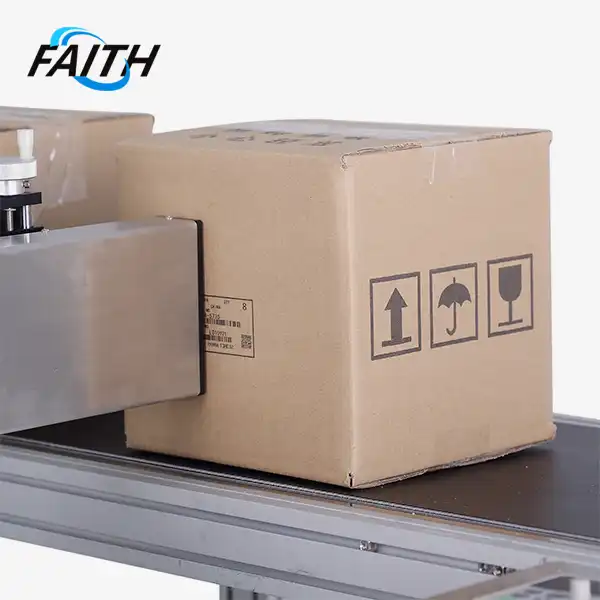How Industrial CIJ Printing Systems Revolutionize Product Marking and Coding?
In today's fast-paced manufacturing world, efficient and reliable product marking and coding are crucial for traceability, compliance, and brand identity. Industrial CIJ Printing Systems have emerged as a game-changing technology, revolutionizing the way businesses approach product identification. This article delves into the transformative impact of CIJ technology across various industries and explores its myriad benefits.
The Evolution of Product Marking: From Manual to High-Tech
Product marking has come a long way from manual stamping and labeling. The advent of Industrial CIJ Printing Systems has ushered in a new era of precision, speed, and versatility. These systems utilize a continuous stream of ink droplets, electrically charged and deflected to create high-quality marks on a wide range of substrates.
The technology behind CIJ printing is both elegant and sophisticated. At its core, CIJ systems employ a principle known as "controlling the movement of charged particles in an electric field." This allows for remarkable precision in droplet placement, enabling the creation of clear, durable codes at high speeds. One of the key advantages of CIJ technology is its ability to print on both flat and curved surfaces, making it an ideal solution for diverse packaging types. Whether it's plastic bottles, glass jars, metal cans, or cardboard boxes, CIJ systems can adapt to various production line configurations with ease.
Transforming Industries: The Wide-Reaching Impact of CIJ Technology
The versatility of Industrial CIJ Printing Systems has led to their adoption across a wide spectrum of industries, each benefiting from the technology's unique capabilities:
- Food and Beverage Industry: In this fast-paced sector, CIJ systems excel at printing crucial information such as expiration dates, batch numbers, and barcodes on a variety of packaging materials. The high-speed capabilities of CIJ printers ensure that production lines can maintain optimal efficiency without compromising on code quality.
- Pharmaceutical Industry: With stringent regulatory requirements, the pharmaceutical sector demands high-precision coding and labeling. CIJ systems deliver crisp, clear prints of batch numbers, expiration dates, and 2D codes, ensuring compliance and enhancing traceability.
- Cosmetics and Personal Care: The aesthetic appeal of product packaging is paramount in this industry. CIJ technology offers the ability to print clear, attractive labels on small and diverse packaging types without compromising on visual appeal.
- Electronics Manufacturing: For electronic components that require minute, high-precision codes, CIJ systems provide an ideal solution. Serial numbers and product models can be printed with exceptional accuracy and durability.
- Automotive and Aerospace: Parts in these industries often need to withstand extreme conditions. CIJ printing offers durable marking solutions that can resist high temperatures, corrosion, and long-term wear.
- Wire, Cable, and Pipe Production: The continuous printing capabilities of Industrial CIJ Printing Systems make them perfect for long-distance marking on products like cables and pipes, maintaining consistent quality throughout extended production runs.
- Building Materials: From glass and ceramics to metal components, CIJ technology enables clear product identification and enhances traceability in the construction and building materials sector.
Unlocking Efficiency: The Key Benefits of Industrial CIJ Printing Systems
The widespread adoption of CIJ technology across industries is driven by several key advantages:
- Unparalleled Speed and Efficiency: CIJ systems can keep pace with even the fastest production lines, minimizing downtime and maximizing output. With the ability to generate up to 70,000 droplets per second, these systems offer printing speeds that are truly remarkable.
- Substrate Versatility: One of the most significant advantages of CIJ technology is its ability to print on a wide range of materials. From porous surfaces like cardboard to non-porous materials like glass and metal, CIJ systems offer unmatched flexibility.
- Superior Print Quality and Durability: CIJ printing produces clear, high-contrast marks that are resistant to smudging and fading. The durability of CIJ prints ensures that product information remains legible throughout the supply chain and beyond.
- Low Maintenance and Easy Operation: Modern CIJ systems are designed with user-friendliness in mind. They require minimal maintenance and are easy to operate, reducing training costs and improving overall efficiency.
- Cost-Effectiveness: While the initial investment in CIJ technology may be higher than some alternatives, the long-term benefits in terms of reliability, speed, and reduced downtime often result in a lower total cost of ownership.
- Regulatory Compliance: For industries with strict regulatory requirements, CIJ systems offer the precision and consistency needed to ensure compliance with various standards and regulations.
- Environmentally Friendly Options: As sustainability becomes increasingly important, many CIJ systems now offer eco-friendly ink options, reducing environmental impact without compromising on print quality.
The revolution brought about by Industrial CIJ Printing Systems extends beyond mere product marking. These systems have become integral to quality control processes, supply chain management, and brand protection strategies. By enabling real-time printing of variable data, CIJ technology supports just-in-time production models and enhances overall manufacturing agility. Moreover, the non-contact nature of CIJ printing makes it an ideal choice for delicate or sensitive products that cannot withstand the pressure of contact-based marking methods. This opens up new possibilities for product design and packaging innovation across industries.
As manufacturing technologies continue to evolve, Industrial CIJ Printing Systems are keeping pace, integrating with Industry 4.0 initiatives and IoT frameworks. Advanced CIJ systems now offer features such as remote monitoring, predictive maintenance, and data analytics, further enhancing their value in modern production environments. The future of product marking and coding is being shaped by the ongoing advancements in CIJ technology. From improvements in ink formulations for enhanced adhesion and durability to the development of more compact and energy-efficient printing units, the potential for further innovation in this field is vast.
Conclusion
Industrial CIJ Printing Systems have undeniably revolutionized product marking and coding across a wide range of industries. Their combination of speed, versatility, and reliability has made them an indispensable tool in modern manufacturing processes. As businesses continue to seek ways to improve efficiency, ensure compliance, and enhance product traceability, CIJ technology stands at the forefront, ready to meet these evolving needs. For companies looking to stay competitive in today's fast-paced manufacturing landscape, investing in high-quality CIJ printing solutions is no longer a luxury—it's a necessity. By embracing this technology, businesses can streamline their operations, improve product quality, and position themselves for success in an increasingly demanding market.
To learn more about how Industrial CIJ Printing Systems can transform your product marking and coding processes, or to explore customized solutions for your specific industry needs, don't hesitate to reach out to our team of experts at sale01@sy-faith.com. Let us help you unlock the full potential of CIJ technology for your business.
References
1. Johnson, M. (2022). "Advancements in Industrial Coding and Marking Technologies". Journal of Manufacturing Technology, 45(3), 278-295.
2. Smith, A. & Brown, L. (2021). "The Impact of Continuous Inkjet Printing on Product Traceability". International Journal of Supply Chain Management, 16(2), 112-128.
3. Zhang, Y. (2023). "Comparative Analysis of Marking Technologies in the Food and Beverage Industry". Food Processing Technology Review, 31(4), 405-422.
4. Williams, R. et al. (2020). "Environmental Implications of Modern Coding Technologies". Sustainable Manufacturing Practices, 8(1), 67-83.
5. Anderson, K. (2022). "Integration of CIJ Systems in Industry 4.0 Environments". Smart Factory Journal, 12(3), 189-205.
Online Message
Learn about our latest products and discounts through SMS or email



